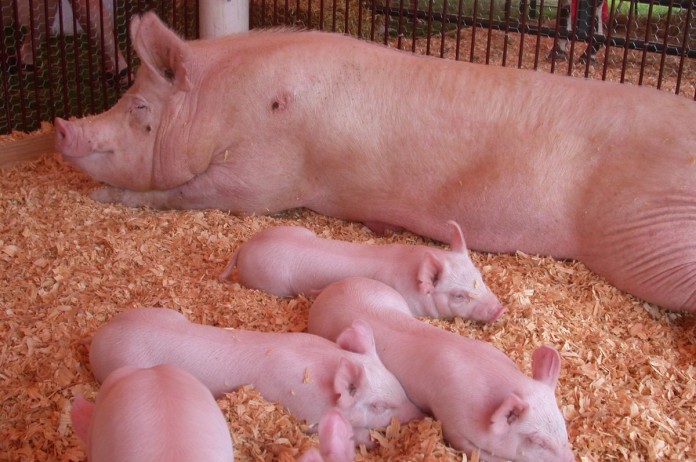SALEM, Ohio — The U.S. Department of Agriculture announced funds June 5 to help USDA and swine producers respond to the significant impacts of porcine epidemic diarrhea virus (PEDv) and porcine deltacoronavirus (PDCoV).
USDA is providing $26.2 million to combat these diseases and has also issued a federal order requiring the reporting of new detections, to the Animal and Plant Health Inspection Service, or state animal health officials.
Serious issue
These viruses do not pose any risk to human health or food safety and they are commonly detected in countries around the world. However, their impact to the swine industry has been substantial.
PEDv has affected hog operations in 30 states, killing an estimated 8 million animals, mostly pre-weaned piglets.
“In the last year, (the) industry has estimated PEDv has killed some 7 million piglets and caused tremendous hardship for many American pork producers,” said Agriculture Secretary Tom Vilsack. “The number of market-ready hogs this summer could fall by more than 10 percent relative to 2013 because of PEDv.”
The USDA action is designed to work with the industry and state partners, to strengthen the response to PEDv.
Market reaction
Store prices for pork have risen by almost 10 percent in the past year, largely due to a smaller herd as a result of these diseases.
The industry is already seeing herds previously impacted by the virus become re-infected, and routine and standard disease reporting will help identify the magnitude of the disease in the United States and can help determine whether additional actions are needed.
Management plan
The federal order also requires that operations reporting these viruses work with their veterinarian or USDA or state animal health officials to develop and implement a reasonable management plan to address the detected virus and prevent its spread.
Plans will be based on industry-recommended best practices, and include disease monitoring through testing and biosecurity measures. These steps will help to reduce virus shed in affected animals, prevent further spread of the disease, and enable continued movement of animals for production and processing.
The international animal health governing body, the OIE, believes that cases of PEDv and these other swine enteric coronavirus diseases shouldn’t be the basis for countries to restrict exports of pork and pork products from the U.S.
“We’re hopeful the USDA plan will work,” said NPPC President Dr. Howard Hill, a veterinarian and pork producer from Cambridge, Iowa. “We still need to see the fine details of the program, but if USDA can focus a lot of the plan on researching and testing this devastating disease and on helping producers enhance their biosecurity, that would go a long way to helping us know how to control and to prevent the virus.”
Market correction
Chris Hurt, extension economist with Purdue University, said producers are compensating for the loss of animals, with larger carcass weights.
In January and February, weights were up about 2 percent above the average in the previous year. Once hog prices soared to record highs in February and March, producers have continuously increased weights.
For 2014 year-to-date, the total number of hogs coming to market has been down 4 percent, but weights have been up 3 percent so that the total supply of pork has only been down a modest 1 percent, compared to the first five months a year-ago.
Hog prices are also beginning to return “back to earth,” Hurt says, since reaching their highs near $100 on a liveweight basis in the last week of March.
In recent days, prices have fallen to the low $80 level. A current futures-based forecast suggests hog prices will be in the mid-$80s this summer before falling sharply this fall with a fourth quarter average near $70.
Further moderation in prices is expected into 2015 with winter prices falling again to the mid-$60s and spring and summer 2015 prices in the mid-to-higher $60s.











